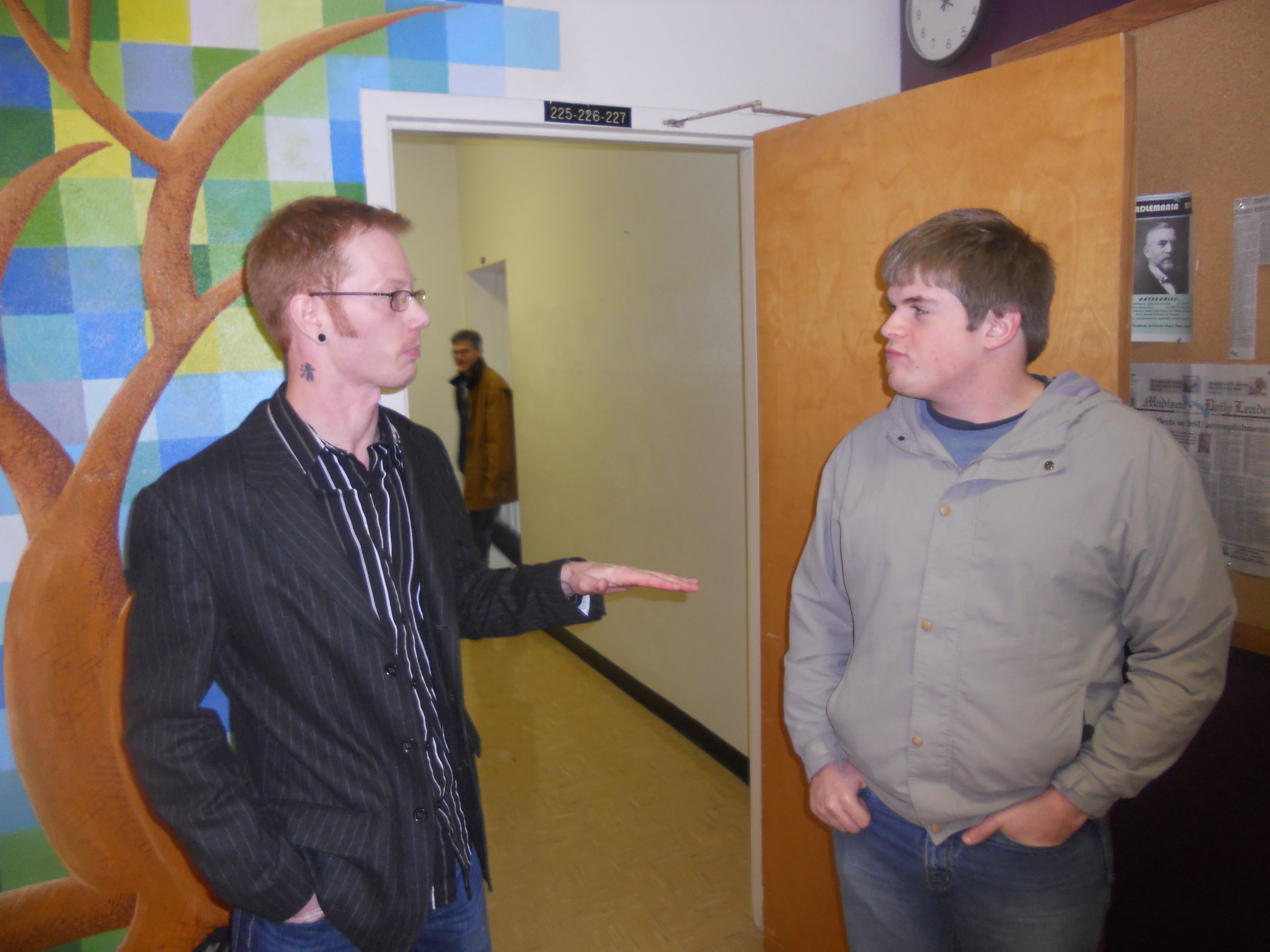St. Cloud Time Content Producer Provides New Media Tips & Tricks

Daniel Crisler
Last Friday, Dakota State English for New Media majors were greeted with a conference visit from St. Cloud Times online content producer Adam Hammer in Beadle Hall 224.
For those wondering what exactly an online content producer is, it is like a newspaper layout editor, except Hammer lays out the content on the Times website instead of a traditional newspaper. Hammer stated that he was the only full-time online content producer at the St. Cloud Times.
As part of his duties, Hammer not only posts other Times journalists’ content on the web, he also creates new media applications that cannot be expressed in print such as interactive timelines and videos. For example, when the 20th anniversary of Jacob Wetterling’s kidnapping occurred back in 2009, Hammer constructed a website feature that detailed the parameters of that unsolved case.
When he is not creating dedicated features like the Wetteringly project, Hammer spends the majority of his time posting updates to the Times’ Facebook and Twitter feeds and analyzes the feedback generated from users who follow those pages. Twitter’s 140 character limit is an ideal platform to post breaking news updates, whereas Facebook is used to link users to the main Times page. This flexibility allows for the Times to provide a lot of options.
“There’s a lot of room for connection with those social media tools,” Hammer said.
The Times recently incorporated Facebook into their website through the comments. With users needing a Facebook account to post comments, the comments tend to be a lot more civil than the old system where people could post anonymously. Due to the inherent public nature of Facebook commenting, users are a bit more hesitant to post a comment. Whereas the anonymous comments could average around 150-200 per story, the Facebook comment system only averages around 80-90 comments.
Hammer stated that out of the 3-4 million hits on the Times main page per month, Facebook makes up 40,000 of those hits. Sometimes, the main page can reach 6 or 7 million hits per month. With that many hits, it is natural to assume that the web has cut into the newspaper base. Hammer had a quick answer to that.
“We don’t sell newspapers anymore. We sell content,” he said.
Hammer stated that the Times relied on advertising revenue to support their operation on the web. Hammer stated that the newspaper medium is struggling due to the bad economy. Left unacknowledged is the fact that newspaper companies with a web presence do not really sell content to readers as much as they give it away with no subscription of any sort being required.
At the end of his conference, Hammer provided the students an insight to his typical day, or rather, the lack of one. The newspaper industry revolves around being ready to cover any event that often is spontaneous, which does not allow for a typical day in the traditional sense.
Afterwards, students expressed their appreciation of Hammer’s visit before going back to their typical days, or as typical as a Friday can be.








